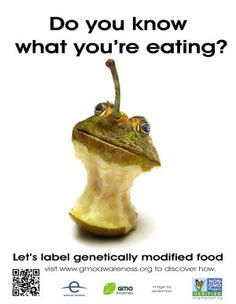Even with opposition, it is pretty obvious that GMOs aren’t going to go away any time soon. Whether or not we like it, each of us will be affected one way or another by GMO’s. By 2050 it is expected to have the need to produce 70% more food to feed the world (Naam, 2014) . This is going to require that the food being produced is resistant to insects, anddrought, and have an increase in nutrient availability. In richer countries citizens, can be more creative and selective with their food sources. They will have the ability to choose organic foods or non GMO foods but in poor countries there is a need for these foods. In places like India where pesticides cost a whole lot and aren’t as available these GM crops are fulfilling the needs for farmers (Naam, 2014) . Whether you are for or against GMO production, the research that has been done on their benefits show that they are no different from other foods and do not contain harmful substances (Modern Ag, 2017) . The scientist working on these foods are feeding the same foods to their families and to themselves, why would they allow something that is harmful on the market?
But the question about the future of GMO’s is still there. Is there a potential for something harmful to end up in the food chain from lack of conscious attention? Right now, we are right in the middle of elections for individuals who will hopefully listen to the voice of the people and run the country accordingly. As the number one food source to the world we each have a say in who is elected and it is so important that we play a role in selecting people who will put laws in place the require regulations of foods before they hit the market both here and in foreign countries. We each need to take a stand in making sure that genetically modified foods go in the right direction and continue to be a good part of food technology instead of a regret. It is important that we are informed and that we do our research from valid sources. It is important that we look at both sides of the argument from several different angles to understand what is really at stake. We need to be proactive on every side of the food network.
Works Cited
Modern Ag. (2017, February 1). The Science Inside a GMO Seed. Retrieved June 22, 2018, from Modern Ag: https://modernag.org/innovation/the-science-inside-gmo-seeds/?gclid=CjwKCAjw9qfZBRA5EiwAiq0AbVb37YjSD4QmyuRQpx6_5QxHzUjH1gu-g9-bnolu_UqDhyJWvr1schoCIOkQAvD_BwE&gclsrc=aw.ds
Naam, R. (2014, January 22). Why GMO's matter- especially for the dveloping world. Retrieved June 22, 2018, from Grist: https://grist.org/food/why-gmos-do-matter-and-even-more-to-the-developing-world/


